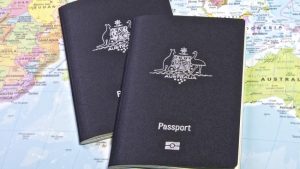So you’ve done your research online, talked to successful migrants, possibly discussed with the migration agent, reviewed your skill history, have taken the IELTS test, and numerous times, added your points under the General Skilled Migration Program. But every time, you still find out that you have too few points to apply under the general skilled migration program. What happens now?
Firstly, you need to understand how to determine the demand for skilled migration. Migration is Australia is highly dynamic and fluid in which new occupations are both included and removed from the skilled occupation lists every year. Some states may include some occupations, others might exclude the same. Some states might require higher thresholds, other thresholds might be lower.
Many factors influence the criteria for skilled migration dynamics that in general, it comes down to two significant factors:
- Political factors
- Market Supply and Demand
While market supply and demand is the primary factor for the changes, political input can be driven by changing perceptions on the impact that migration has contributed to Australia’s community and community values. Supply in demand is directly reflected in the occupation list and the occupation sealing for most, if not all, of the occupations on the skilled occupation lists.
The department knows specifically how many people the market demands for any particular occupation for the current year. This figure is calculated using research statistics and trends provided by other departments within the federal government primarily the ABS (Australian Bureau of Statistics) who regularly asses the state of the Australian labor market. In some respects, this is transparent.
However, in another aspect, it is an opaque process that the government cannot allow the system to be too transparent as that may make it vulnerable to manipulation. Now withstanding, the department clearly gives an indication on which direction they understand the labor market is moving over the current year. Protocol pressure can also have a bearing on the migration caps and the skilled occupation list. Particularly important is the feedback on community sentiment on a certain issue and then this is generally taken to account and can affect the number visas granted under the number of places allowed to be accepted in an occupation.
With the background understanding of how the Australian government determines the occupation in demand for a particular year, it is worth reviewing the actual occupation list they are looking for. These are in the consolidated occupation list which you can see here. Quite simply, this list can be understood as a high demand or low demand list with specific requirements for each occupation and most relevantly, when it comes to applying for a permanent residency visa.
One of the most common questions that we are asked as Australian registered migration agents is: If I have been working in the occupation, say for instance nursing for over 6 years, why can’t I be considered in this occupation (i.e. a nurse). In most instances, your occupation will match your qualifications.
However, if your occupation does not match the qualifications, then there may be additional requirements that are required in order for you to be assessed. This assessment varies with the occupation and with the particular assessing body that conducts it. The general rule of thumb is that the closer the qualifications are to the occupation, the stronger your prospects are for being recognized as holding as having the skills relevant to the occupation.
Also, for the majority of the occupations, you would need at least a diploma to qualify. The general rule is that the more closely your work history aligns with your qualification history, the better chance you have of being assessed as holding the skills necessary to the relevant qualification.
So what happens if I fail to qualify?
It is important to understand the background of how the general skilled migration system works. Once you understand this context, it will help you understand that not qualifying presently does not mean you will never qualify. Consequentially, you will always have a few potential pathways.
- Stay aware of the occupation list. Every January and July, there is generally a minor change and adjustment to the occupation on the occupation list. Some appear and some are removed. Accordingly, every 6 months there is a chance your occupation will reappear on the list which may improve your prospects of a successful visa application. If your occupation is inserted on to the list, you should quickly contact one of the registered migration agents at Summit Migration, the stronger the prospects you will be.
- Consider changing occupations. This can be a complex process if you’ve changed occupations early in your career or alternatively, if your qualification allows for a number of different occupations then this is conceivably a pathway for you. For instance, if you started your career in one market sector, for instance, Accounting but transferred to Marketing and completed a post-graduate study in Marketing and will be working in a relevant sector for the last 6 years, then it’s possible this may create a pathway for you. However, the success of this pathway is dependent on the number of factors namely, your qualification, your occupation, and how long you’ve been working in your present occupation.
- Consider other visa pathways. There are different pathways under the Australian migration scheme that can qualify you for permanent residency. For instance, the family migration program specifically the partner visa program. Another is the investor visa pathway. If you have the capacity to invest 1.5M AUD or more in the various funds within Australia, you may have prospects under the investor visa class. Another is the business visa class. If you currently own your own business in which to start another one in Australia, you may have prospects under the business visa pathway. Each one of these visa pathways varies in criteria and requirements for a successful grant.
It is worth taking note that the Australian migration program is highly complex and constantly fluid but success under the skilled migration regime can be reduced in a single factor. What your occupation is, and whether you qualify to work in that occupation.
If your occupation is not presently listed on the skilled occupation list, then you may need to wait and watch whether a favorable change occurs in the next list change or if you’re early enough on your career, you may want to consider switching careers to a path that may improve your prospects.
If you are looking to apply for an Australian permanent residency visa, please contact one of the experienced registered migration agents at Summit Migration.
<








